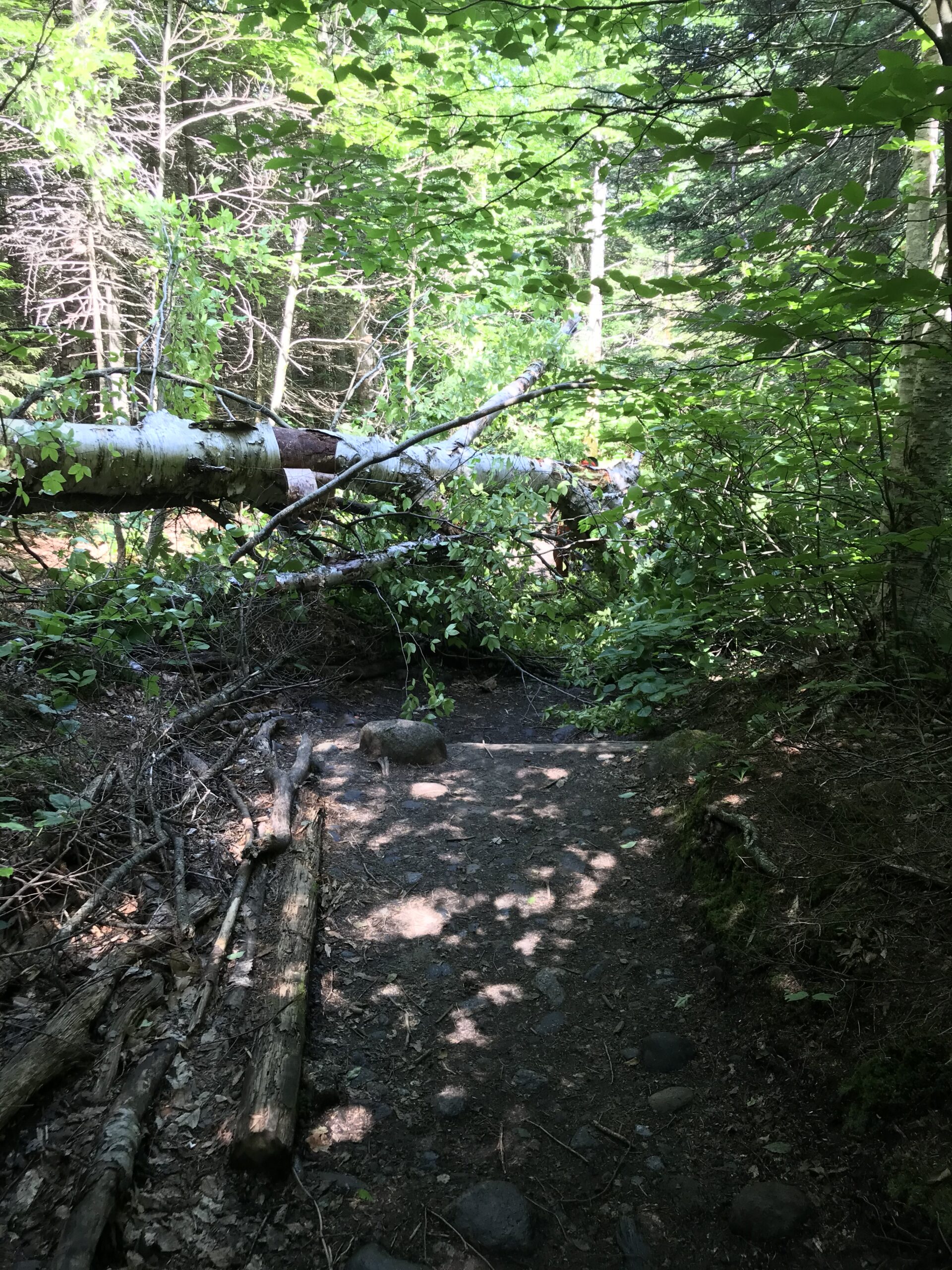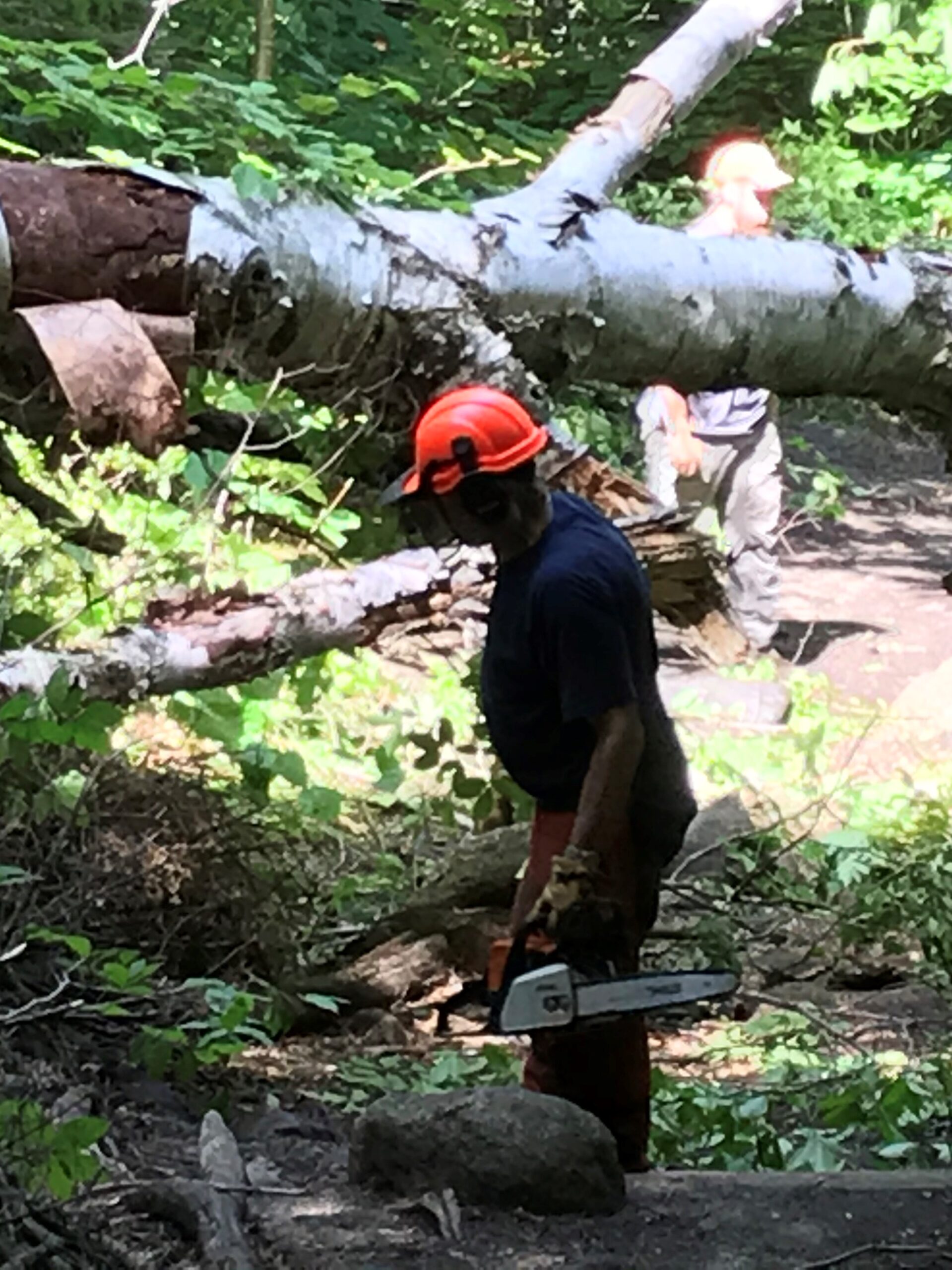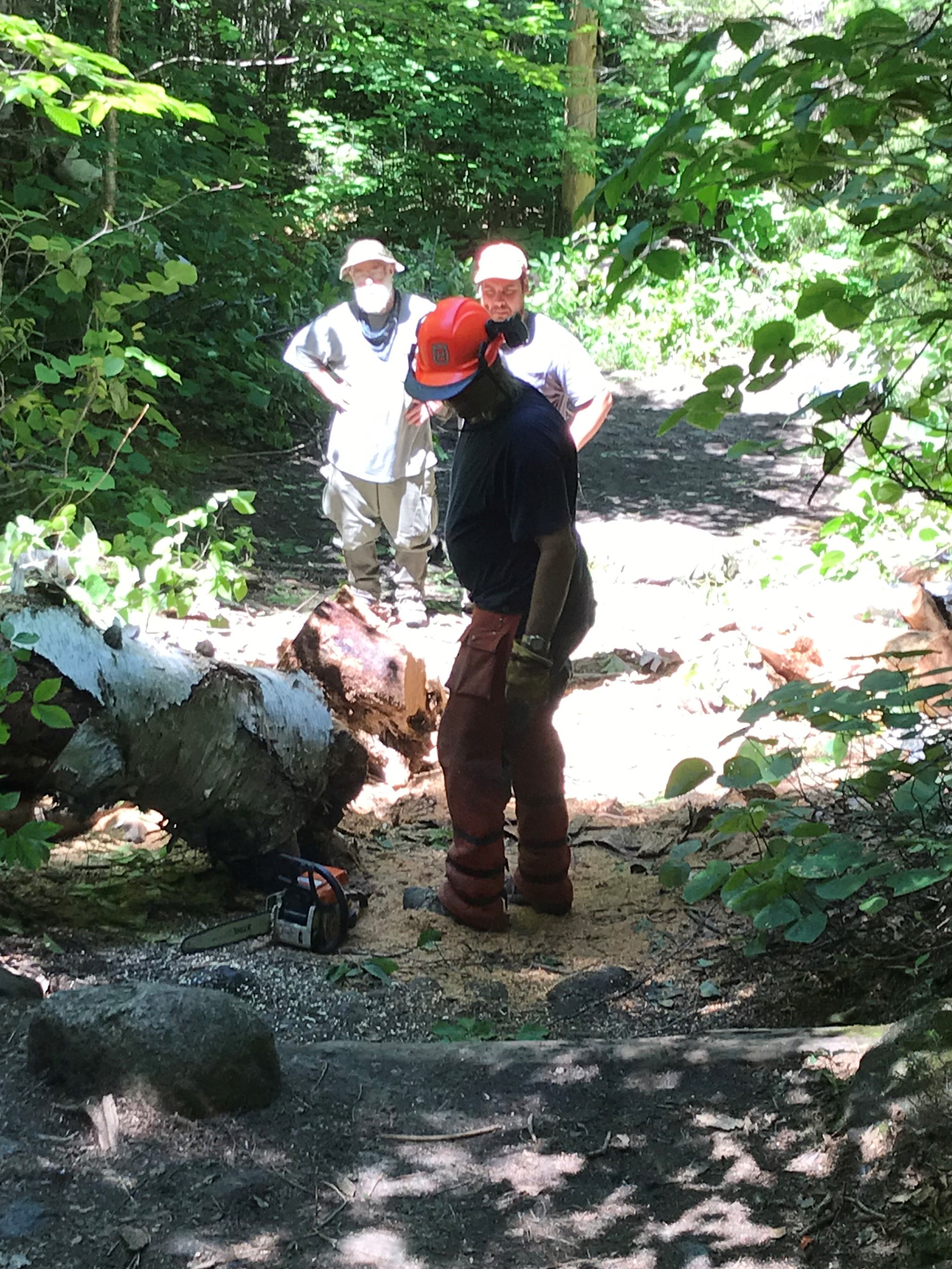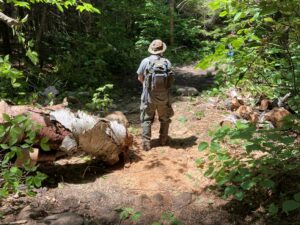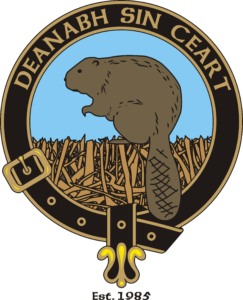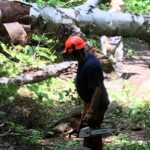Mitigating Erosion and a 24″ Surprise
The pandemic has receded this spring, the NH State Bird aka the black fly has outlived its usefulness and gone home till next year, and the trail crew is fixing trails damaged by heavy use and normal wear and tear.
On June 18-19, four of us turned out for six hours each day. It felt really good to be back on the hill moving logs and rocks again.
On Friday we started at the trailhead and worked uphill. Two crew set another rock step near the road, then replaced a rotting wood step nearby. Meantime the other two harvested logs and branches from the woods to build more barricades beside the trail. Then the other two joined in, and we set many rocks in shallow holes beside the trail as well. This is called scree or rubbling, the idea is to make the trail look like the easier place to walk so the hikers wear away less soil. We ended Friday by setting another 200-lb. rock as a step just below some stairs. Meantime, descending hikers told us of a huge birch just fallen across the trail halfway up the mountain.
On Saturday the crew included one of our experienced sawyers who none the less took and passed the state's safety course the previous week. We left the trailhead at 0930 and reached the big fallen tree at 1/2 Way Well just after 1000. We studied the situation and considered what to do, posted flaggers uphill and downhill to hold hikers while the sawyer was cutting and operating the saw.
Here the sawyer's remarks seem very pertinent: "IMHO nothing was tackled that we did not feel comfortable with. We approached the problem carefully and systematically. We studied and took note of all the things that might happen. I think the best thing we did was to pull the thing to the ground using our webbing. Yes it was a big job and we may have bent the rules slightly but that blow down needed to be taken care of right then and there or massive damage would most certainly have occurred to the area by hikers creating herd paths to get around it. I think every situation has its own unique circumstances and we should approach each with the same amount of care and thought as we did with this one." You can see the size of the tree, but by cutting with care and foresight, and by having safety spotters paying attention, nothing was cut that was itself under tension. Thus there were no unpleasant surprises.
The photos below may give an idea of what a delicate job this was.
After lunch, the sawyer had to depart. It doesn’t need to be in this report but I did take care of a second blow down a ways down the trail from the initial one before departing. We remaining three built a short rock waterbar, set a perfectly rectangular rock to be a new step below a high root, and replaced a rotting wood step with a debarked log we had kept above the ground on rocks for two years until needed. The winter winds give us many blowdowns each year; some we salvage.
This trail always needs work, and we still call it fun.
